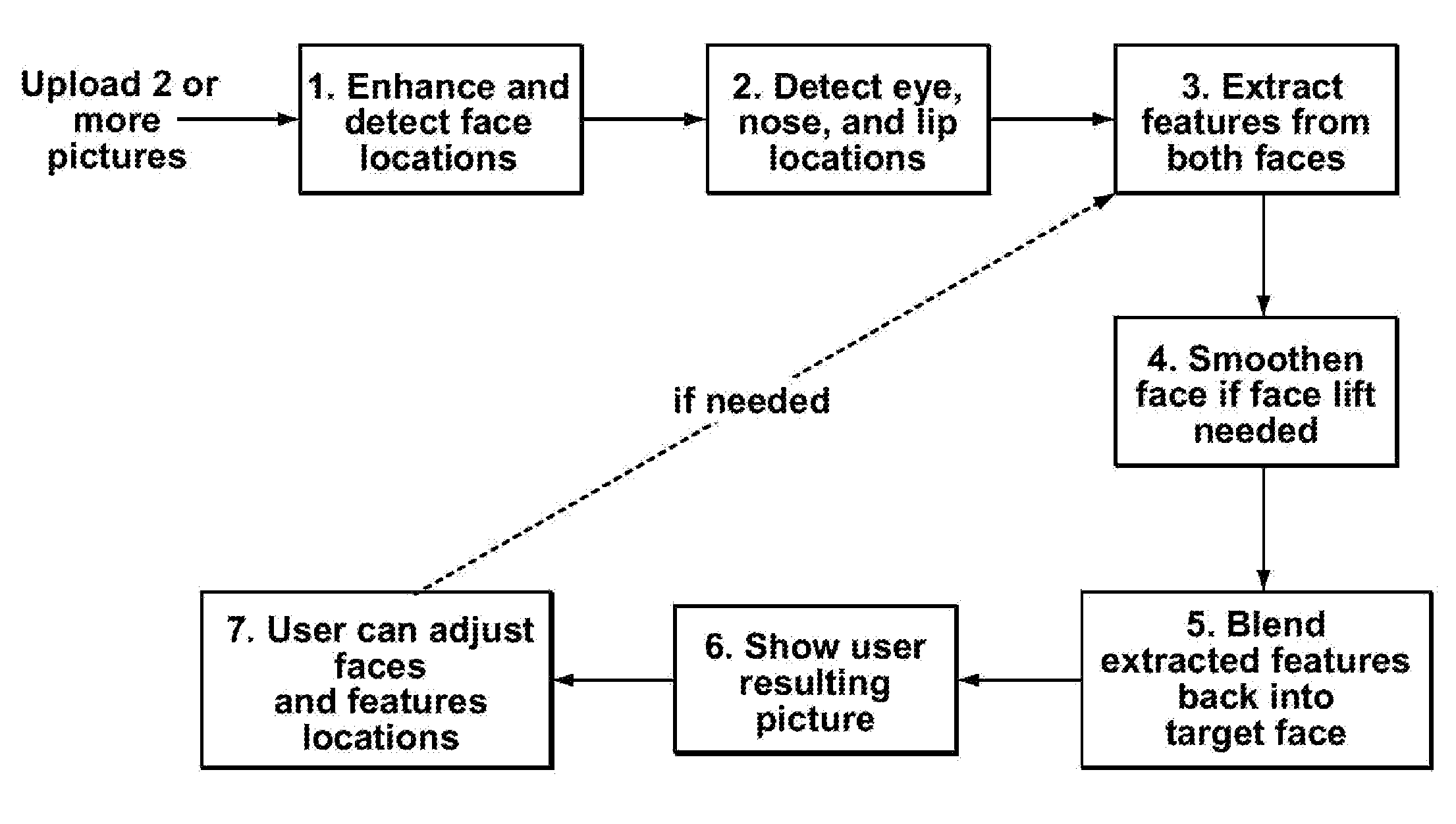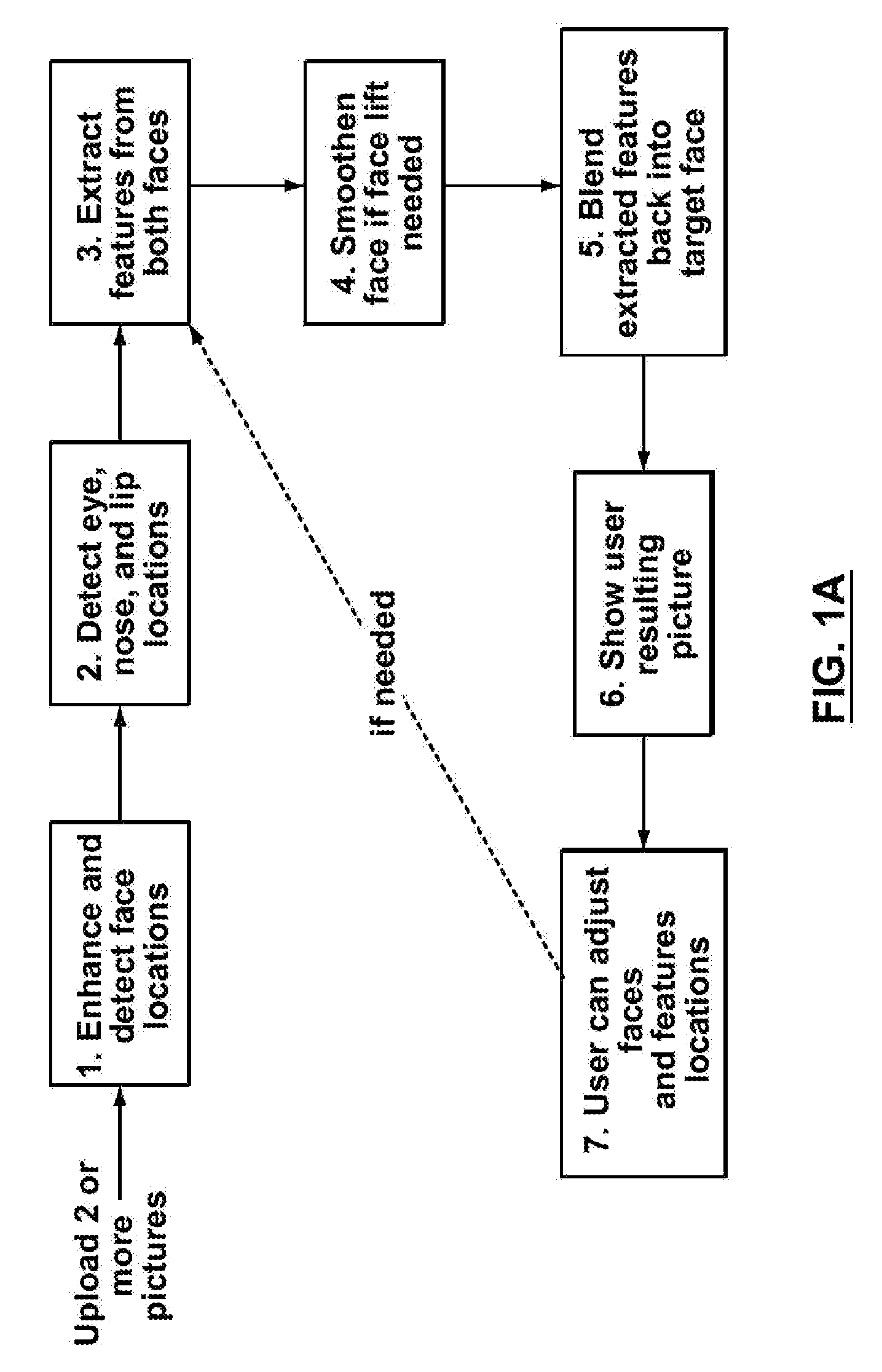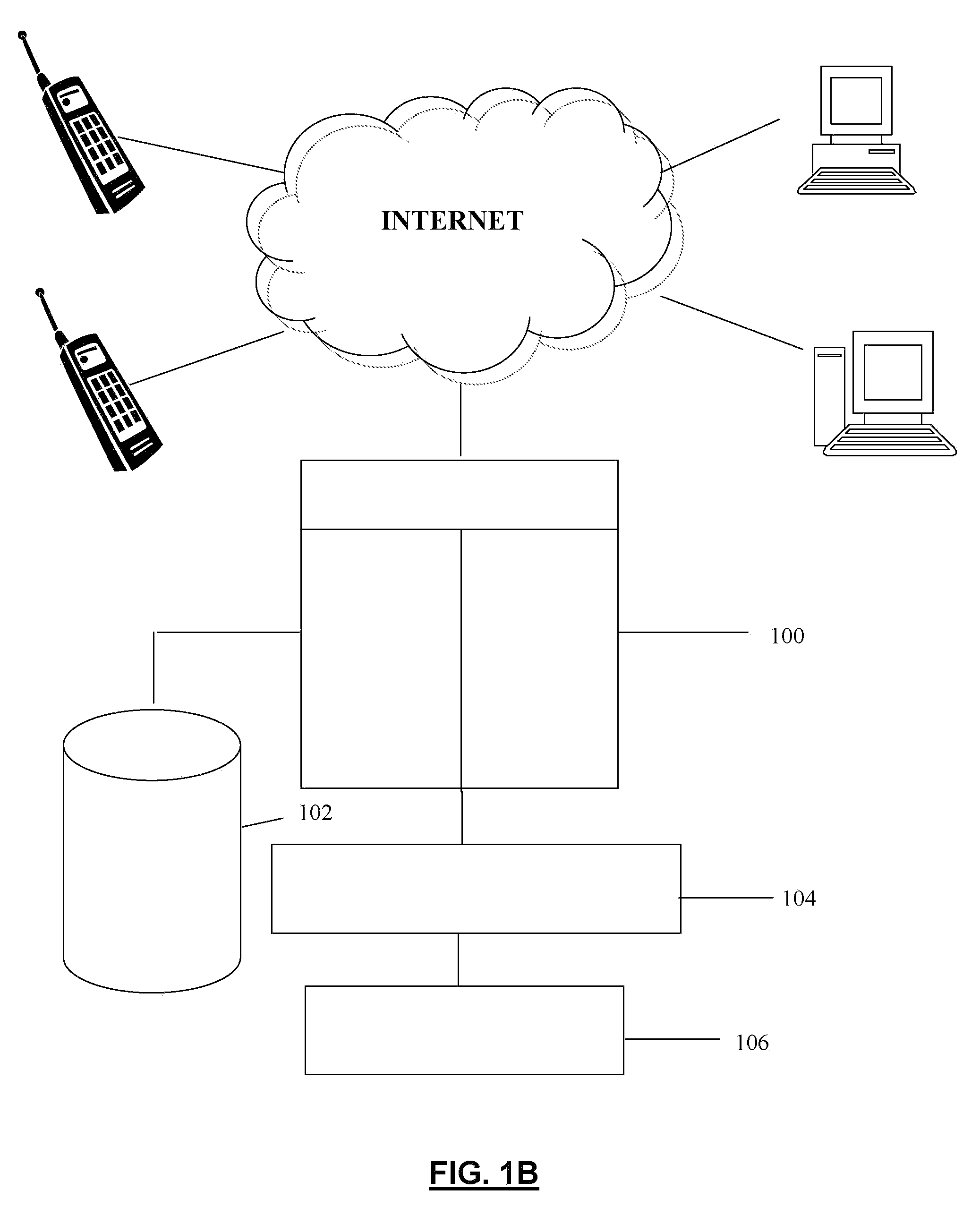Method, system and computer program product for automatic and semi-automatic modification of digital images of faces
a technology of automatic or semi-automatic manipulation and digital images, applied in the field of methods and systems for automatically or semi-automatic manipulation and/or modifying digital images of human faces, can solve the problems of large time and effort spent by users manually entering parameters, and the system disclosed in these references is relatively complicated, so as to improve the accuracy and reliability of the final video result, and the effect of increasing the perceived beauty of the fa
- Summary
- Abstract
- Description
- Claims
- Application Information
AI Technical Summary
Benefits of technology
Problems solved by technology
Method used
Image
Examples
example interface
for Invention
[0125]The interface for the MODIFACE system can take many different forms. One example web-based interface is depicted in FIG. 2. This interface allows for up to two images to be uploaded to the website, as well as for a set of input buttons (i.e., “hair”, “face”, “eyes”, “nose”, “mouth”, “Facelift” and “Modify”) indicating which feature(s) to select from which face, whether to perform a facelift, and initiating the face modification.
[0126]Once the user has entered the parameters and images (or videos), the system of the present invention is operable to perform automatic face modification and show the results to the user. Also shown to the user are the estimated locations of the facial features, which can be dragged and moved by the user in order to yield a more accurate modification, if necessary to achieve an accurate result, or if otherwise desired by the user. This particular user intervention also illustrates the semi-automatic nature of the present invention. It s...
PUM
 Login to View More
Login to View More Abstract
Description
Claims
Application Information
 Login to View More
Login to View More - R&D
- Intellectual Property
- Life Sciences
- Materials
- Tech Scout
- Unparalleled Data Quality
- Higher Quality Content
- 60% Fewer Hallucinations
Browse by: Latest US Patents, China's latest patents, Technical Efficacy Thesaurus, Application Domain, Technology Topic, Popular Technical Reports.
© 2025 PatSnap. All rights reserved.Legal|Privacy policy|Modern Slavery Act Transparency Statement|Sitemap|About US| Contact US: help@patsnap.com



